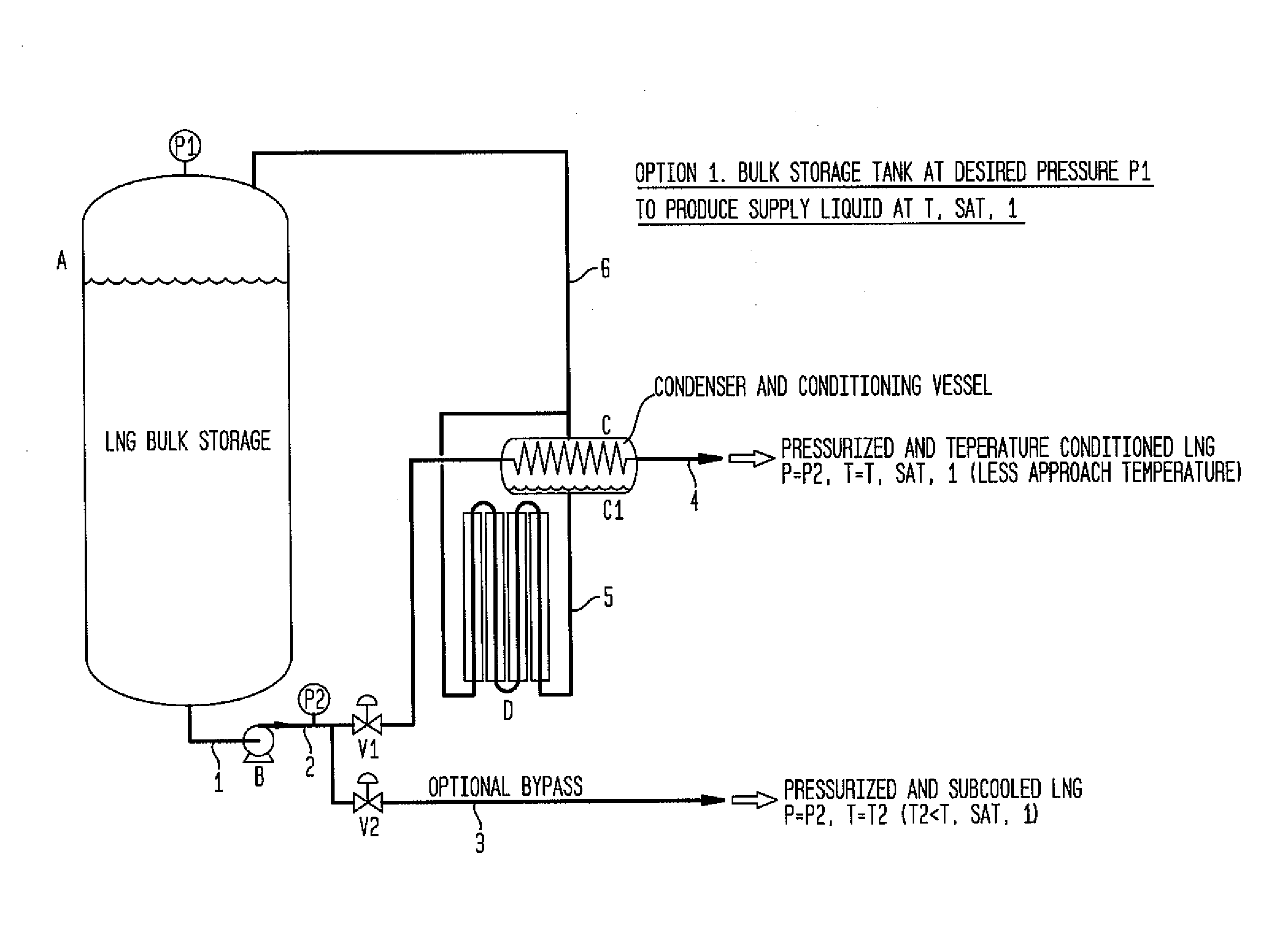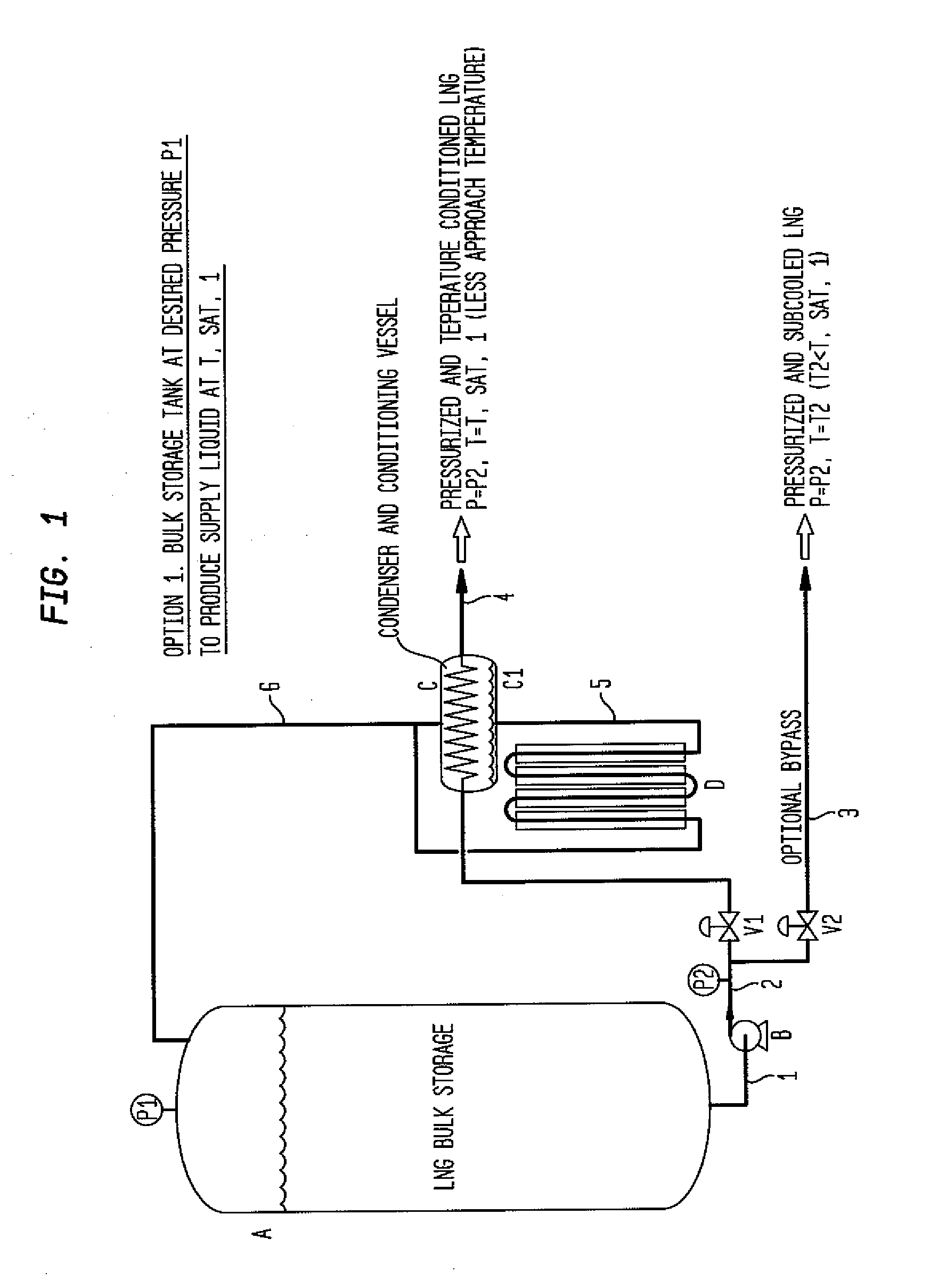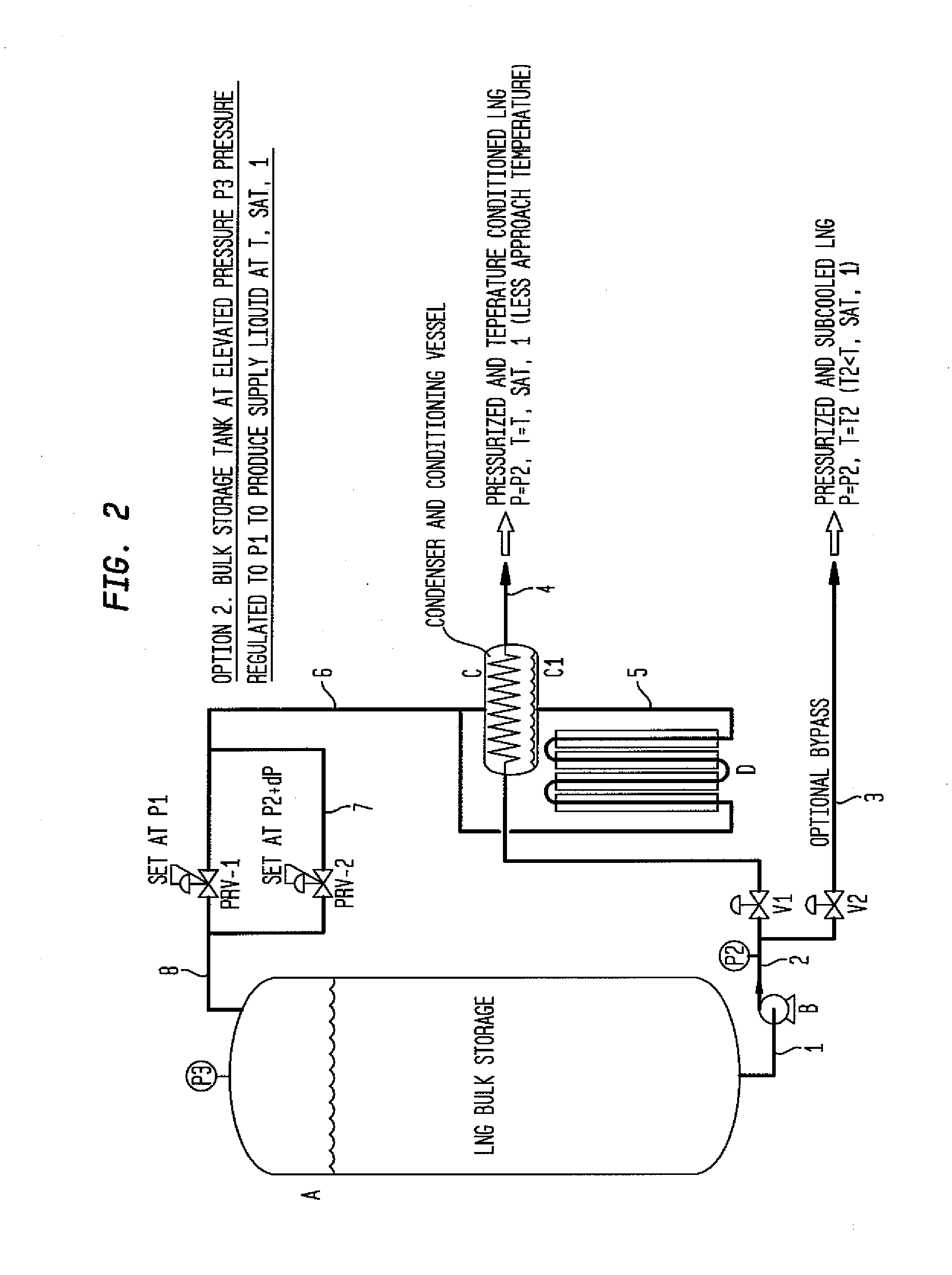Liquefied natural gas refueling system
a liquefied natural gas and refueling technology, applied in the direction of mechanical equipment, vessel construction details, container discharging methods, etc., can solve the problems of subcooled liquid thwarting standard pressure building methods, requiring non-standard operation of bulk cryogenic storage tanks, and difficult to maintain minimum pressur
- Summary
- Abstract
- Description
- Claims
- Application Information
AI Technical Summary
Benefits of technology
Problems solved by technology
Method used
Image
Examples
Embodiment Construction
[0028]The invention provides an inherently stable, and quickly adjustable, method for producing LNG at specified temperatures and pressures. In one embodiment, detailed in FIG. 1, a LNG distribution system is shown. The bulk storage tank A is maintained at pressure P1 through standard tank pressure control methods, not shown in the figure. The pressure P1 may vary somewhat over time in order to minimize unnecessary venting of natural gas vapor. A typical bulk storage tank pressure is about 4 to 12 barg. The liquefied natural gas will exit the bulk storage tank A through line 1 and pump B. The liquefied natural gas now at pressure P2 which is higher than pressure P1 passes through valve V1 by line 2 and into condenser C which is in a heat transfer relationship with conditioning vessel C1. The liquefied natural gas will exit the condenser C through line 4 at the pressure P2 and at a temperature that is higher than the temperature before it entered the condenser C. This exit temperatur...
PUM
| Property | Measurement | Unit |
|---|---|---|
| temperature | aaaaa | aaaaa |
| saturation temperature | aaaaa | aaaaa |
| pressures | aaaaa | aaaaa |
Abstract
Description
Claims
Application Information
 Login to View More
Login to View More - R&D
- Intellectual Property
- Life Sciences
- Materials
- Tech Scout
- Unparalleled Data Quality
- Higher Quality Content
- 60% Fewer Hallucinations
Browse by: Latest US Patents, China's latest patents, Technical Efficacy Thesaurus, Application Domain, Technology Topic, Popular Technical Reports.
© 2025 PatSnap. All rights reserved.Legal|Privacy policy|Modern Slavery Act Transparency Statement|Sitemap|About US| Contact US: help@patsnap.com



